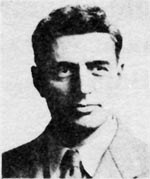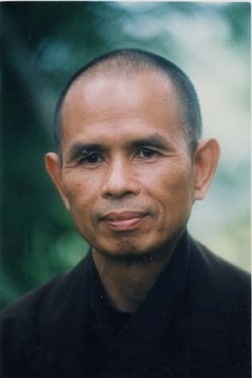Inhaling the Sky

“Each time you inhale you are drawing into yourself an average of about one atom from each of the breaths contained in the whole sky.”
–Guy Murchie (American Artist, Photographer, Member of the Bahá’í Faith and Author, 1907-1997)

Learning to Breathe

There are few skills more valuable than learning to breathe properly. And I say that as someone who used to have a terrible way of moving air in and out of myself!
For the last three decades I have routinely offered to teach patients and students how to help themselves with simple breathing exercise. If you are interested, I have recorded some of my methods.
Sadly some people have scant interest in learning. I recently saw a patient with a chronic problem with anxiety. I asked her if anyone had tried to help her to help herself with some breathing techniques. She told me, rather tartly, that I was “talking “Bull ****” and that she just wanted me to give her a “narcotic.”
Oh well, you can’t help everyone.
“Breath is the bridge which connects life to consciousness: which unites your body to your thoughts. Whenever your mind becomes scattered, use your breath as the means to take hold of your mind again.”
–Thich Nhat Hanh (Vietnamese Buddhist Monk, 1926-)
Breathing The Breath of Life

“Everyone should breathe in the divine Breath of Life with all his heart and sing his song of thanksgiving no less regularly than do the birds.”
–Vera Stanley Alder (English Painter and Mystic, 1898-1984)

Breathing Problems During Sleep and the Heart

We have talked about the importance of heart rate variability (HRV), which reflects the activity of many critical bodily functions. HRV is the result of a subtle interplay between the heart and the nervous system, and abnormalities in HRV may be an early warning of severe illness and even of death.
There are many reasons why peoples’ breathing can become disturbed during the night, and it is essential to be sure that we are treating the right thing.
In obstructive sleep apnea (OSA) the body stops breathing during sleep. The most common reason for OSA is swelling of the tissues at the back of the throat that then block the airway.
In central sleep apnea (CSA) is a breathing decreases or stops during sleep. It may occur as a result of a problem in the sleep centers in the brain, and/or the nerves supplying the heart. It usually follows a cycle, with people breathing normally for a while and then slowing or stopping altogether.
Continuous positive airway pressure (CPAP) that provides a steady stream of pressurized air is often the best treatment for sleep apnea.
There is a close relationship between breathing and the heart, and new research from the Alfred Hospital and Monash University in Melbourne, Australia has looked at a sleep-related breathing disorder that is common in heart failure, and increases HRV.
The researchers looked at the breathing patterns of 21 patients with heart failure who had sleep-related breathing disorder.
They found that as people transitioned from stable breathing to a sleep-related breathing disorder, there was an associated increase in HRV.
On the other hand, people with central sleep apnea (CSA) and obstructive sleep apnea (OSA) produce different patterns of HRV, suggesting that they each involve different mechanisms in the heart and the brain.
This may sound esoteric, but it is not.
Breathing problems during sleep are common and so is heart failure. Unfortunately heart failure carries a high mortality rate, and it is very valuable to have simple tests to guide us to give the correct treatment.
Simply measuring HRV during sleep will give us an idea about whether or not a person with heart failure is stable, or if we need to change treatments before he or she starts getting symptoms.
“All the energy that is used in the creation of every cell in the universe is on that breath that you are breathing in.”
–George King (English Spiritual Teacher, Writer and Founder of the Aetherius Society, 1919-1997)
“For breath is life, and if you breathe well you will live long on earth.”
–Sanskrit Proverb
“There is one human activity which is continuous, rhythmic, natural, easy, and pleasant. It is breathing. We may take advantage of its existence by combining it with a simple exercise to bring about a kind of meditation which will possess all these four mentioned attributes. The exercise is merely to repeat one word silently on the inhalation and another word on the exhalation. The two words must be such that they join together to make a suitable spiritual phrase or name. Here is one useful example: “God Is.”
–Paul Brunton (a.k.a. Raphael Hurst, English Philosopher, Traveler, Spiritual Teacher and Author, 1898-1981)
“You know that our breathing is the inhaling and exhaling of air. The organ that serves for this is the lungs that lie round the heart, so that the air passing through them thereby envelops the heart. Thus breathing is a natural way to the heart. And so, having collected your mind within you, lead it into the channel of breathing through which air reaches the heart and, together with this inhaled air, force your mind to descend into the heart and to remain there.”
— Nicephorus the Solitary (Calabrian Christian Mystic and Monk on Mount Athos, c.1250-1300)
Aggressive Bullies, Sleep and Breathing
Here is yet another possible problem associated with poor quality sleep and breathing problems during sleep.
Research from the University of Michigan that was presented at SLEEP 2007, the 21st Annual Meeting of the Associated Professional Sleep Societies in Minneapolis this week, suggests a link with aggression.
Aggressive behavior and bullying are common amongst schoolchildren and are likely to have multiple causes. But a new one, and one which may be an undiagnosed, is sleep-related breathing disorder (SRBD).
The study focused on children in the second through fifth grades who attended school in an urban public school district. Parents completed two well-validated rating instruments: the Conners’ Parent Rating ScalePediatric Sleep Questionnaire SDB Scale. Teachers completed the Conners’ Teacher Rating Scale (CPRS) the (CTRS). The numbers of discipline referrals in the previous 12 months were obtained from the six elementary schools.
A total of 345 CPRS’s and 245 corresponding CTRS’s were completed. The main finding was that schoolchildren who bully may be more likely to have an SRBD than their peers.
An SRBD may be a problem in more than 10 percent of children. It occurs when the airway is partially blocked during sleep. The most common example is snoring. The most severe form of an SRBD is obstructive sleep apnea. It occurs in about one percent to two percent of children.
If you suspect that your child or grandchild might be suffering from an SRBD or, for that matter, any type of sleep disorder, it is a really good idea to consult with your child’s pediatrician, who can see of he or she needs to be referred to a sleep specialist.
We already know that treatment of an SRBD may improve other mood, attention and behaviors in
children. We do not know if treatment might reduce aggression and bullying, and that will be the next research project.
Negative Ions to Help Treat Mania

Last year I talked about some of the nasty problems that can be caused by the hot dry winds that blow in many parts of the planet.
I have just seen that a paper that I was asked to look at a few months ago has just appeared in print, though according to the journal it came out in February!
The investigators used a negative ionizer to augment the treatment of 20 acutely manic people. It was a standard double-blind crossover study with raters who did not know who had received what treatment.
The negative ions did indeed produce a significant improvement in manic symptoms. We already know that atmospheric ions can have an impact on serotonin levels in some parts of the brain, and that could be the mechanism of action.
It is surprising that there has been so little research into such a simple intervention, though it is important to note that the patients were also receiving medications. But it would be valuable to see if such a simple environmental change could modulate serious mood problems before they get to the level of needing hospitalization.
The Vagal Path to Compassion
Students of biology or medicine will likely be familiar with one of the largest single nerves in the body, called the vagus or “wandering” nerve. The nerve emerges from the brainstem and is one of the most important contributors to the parasympathetic nervous system, having important effects on the heart, lungs and intestines. The vagus causes the heart to slow, the intestines and kidneys to become more active and the bronchi to constrict. The vagus also has profound effects on metabolism: it has been known for more than a century that stimulating the base of the brain with opiates can cause the release of glucose from the liver, an effect mediated by the vagus. The nerve is also involved in the interaction of the immune system and the brain.
In recent years a technique called vagus nerve stimulation has been found to help some people with intractable epilepsy or treatment resistant depression. Many of the techniques of yogic or Taoist breathing as well as some techniques for inducing altered states of consciousness by eye movements or stimulating specific points on the ears all revolve around vagal stimulation. Some of these techniques have been shown to produce a sustained reduction in blood pressure.
I would like to focus upon the effects of the vagus on the heart. The heart is a physical location of an aspect of our emotional functioning. In Chinese Medicine it is known as the repository of Shen or Spirit. The heart is more than just a pump. It is also an important endocrine gland, and there is some evidence that it is also a sensory organ, with a sophisticated system for receiving and processing information. The neural network within the heart enables it to learn and remember. The heart constantly communicates with the brain, influencing key areas involved in perception, cognition and emotional processing.
You or someone you know may have had a baby. In which case you or they will have had intrauterine cardiac monitoring. Normally the baby’s heart rate varies from minute to minute. Some forty years ago it was discovered that if that variation stopped, it could be a harbinger of doom. Obstetricians knew this, but the rest of medicine forgot about the observation until 1991. Since then there has been enormous interest in the phenomenon of heart rate variability (HRV), because if it is lost, it can be a potent predictor of health problems. HRV reflects the tone in the autonomic nervous system. If this system becomes unbalanced, it can have effects on most of the major organs.
In the Ageless Wisdom the vagus is called our psychic antenna. We all have one, but not all of us have relearned how to use it. Many psychic stressors can produce physical effects via the vagus nerve. When doing acupuncture or energy healing it is very common for the patient to get a slowing of their heart rate and abdominal rumblings, which are sure signs of vagal activity. Psychics often get problems with their intestines while working with people, not from upset, but because they are exercising their skills.
There has been some interesting speculations about the role of the vagus in social behavior. Researchers have found
that children with high levels of vagal activity are more resilient,
can better handle stress, and get along better with peers than children
with lower vagal tone.
There is a project underway at the University of California at Berkeley to see whether the vagus nerve might be the seat of compassion. Dacher Keltner is a professor of psychology and coeditor of Greater Good, a magazine about prosocial behaviors such as compassion and forgiveness. He has been examining the novel hypothesis that the vagus nerve is related to prosocial behavior such as caring for others and connecting with other people.
In his laboratory, Keltner has found that the level of activity in people’s vagus nerve correlates with how warm and friendly they are to other people. Interestingly, it also correlates with how likely they are to report having had a spiritual experience during a six-month follow-up period. Vagal tone is correlated with how much compassion people feel when they are presented with slides showing people in distress, such as starving children or people who are wincing or have a look of suffering on their faces.
Perhaps a key to compassion is to be found in the heart and the face.
Compassion is crucial to our survival. But compassion leavened with wisdom.
“Love and compassion are necessities, not luxuries. Without them humanity cannot survive.”
–The 14th Dalai Llama (a.k.a. Tenzin Gyatso, Tibetan Religious and Political Leader, 1935-)
“Out of compassion I destroy the darkness of their ignorance. From within them I light the lamp of wisdom and dispel all darkness from their lives."
–Bhagavad Gita
Breathing

“Without mastering breathing, nothing can be mastered.”
–George Gurdjieff (Armenian-born Adept, Teacher and Writer, c.1873-1949)
I strongly recommend breathing. It’s actually one of my favorite pastimes….
Of course breathing is all-important, but it is just as important to ensure that you are breathing in good quality air. Scattered throughout the world are weather fronts accompanied by hot dry winds of ill repute:
- The Santa Ana Winds of Southern California,
- The Mistral of France
- The Khamsin of North Africa
- The Foehn of Switzerland
- The Sharav in Israel
- The Chinook of Canada
- The Sirocco in parts of the Mediterranean
- The Xlokk of Malta
- The Zonda in Argentina
- The Halny of the Carpathian Mountains
These are just some of these winds, that have been known for centuries to precipitate a variety of symptoms in the exposed population, including depression, irritability, insomnia and headaches. The explanation of these effects is an increase in the number of positive ions in the atmosphere, which alter the amount of serotonin in some parts of the brain. I was consulted about an epidemic of headaches amongst people working in an electrically insulated room. It soon became clear that the setup had allowed an enormous concentration of positive ions, and once they installed a negative ionizer virtually all the headaches stopped. We believe that many of the beneficial effects of high altitudes or of being near waterfalls of fountains spring from the way in which they generate large numbers of negative ions.
Poor oxygenation of the lungs has been known for many years to be associated with disease. Pulmonary tuberculosis classically affects the upper lobes of the lung, where there is the poorest oxygenation, and it has been known for a century that people suffering from a blockage of the mitral valve of the heart, which leads to high blood pressure in the lungs, do not get tuberculosis in that part of the lungs.
Conscious control of the breath enables us to modulate the activity of the autonomic nervous system. Specific types of breathing can induce specific psychological and physical effects.
We usually breathe through one nostril at a time. Either the right or left nostril is dominant for anywhere from 45 minutes to two hours. You then switch sides. This is known as the nasal cycle, and is one of the faster circadian rhythms. The popular yogic practice of single nostril breathing is thought to feedback directly into the hypothalamus of the brain. You can learn to use this to your advantage. If you are right handed, if you direct your focus onto opening the right nostril, you may well find an increase in salivation, which is an aid to good digestion. A useful trick that we have used for many years is at bedtime to start by lying on your left side, which has the effect of opening the right nostril, and after ten minutes roll onto your right side for sleep. Again you reverse this if you are left hand dominant. It seems that this simple trick lowers your core temperature, which is one of the main determinants of sleep. There is some research that opening the right nostril increases body temperature, while opening the left has a calming effect. These techniques are often very helpful. Apart from these physical effects, using the breath is one of the quickest ways to learn to sense the subtle forces of the body.
You may already have some breathing practice that you like, and by all means continue using it. If you need a new one, the simplest that I have ever been taught, and that I have used with countless students and patients is this:
Count your breaths. Breathe deeply using your abdominal muscles, so that you are drawing more air into your lungs. Stop immediately if you feel faint or dizzy. As thoughts come up, keep concentrating on the incoming and outgoing breath. Gradually slow the breath, by extending the pause between the inhalation and exhalation.
I always make myself unpopular when I insist that people check with a healthcare provider before stating any exercise plan, including breathing. But I’m going to say it anyway. It just makes good sense!
“Controlled deep breathing helps the body to transform the air we breathe into energy. The stream of energized air produced by properly executed and controlled deep breathing produces a current of inner energy which radiates throughout the entire body and can be channeled to the body areas that need it the most, on demand. It can be used to fuel a specific physical effort, such as tennis or jogging. Or you can use this current of inner energy to relieve muscular tension throughout the body, revitalize a tired mind, or soothe localized aches and pains.”
–Nancy Zi (American-born Chinese Opera Singer, Voice Teacher and Qigong Expert)






